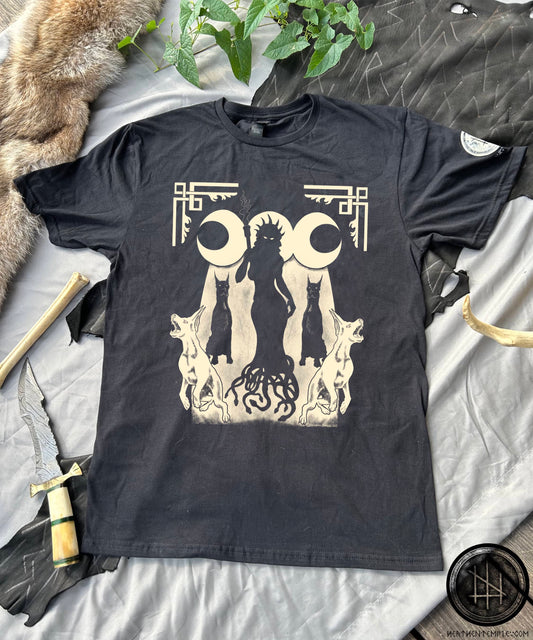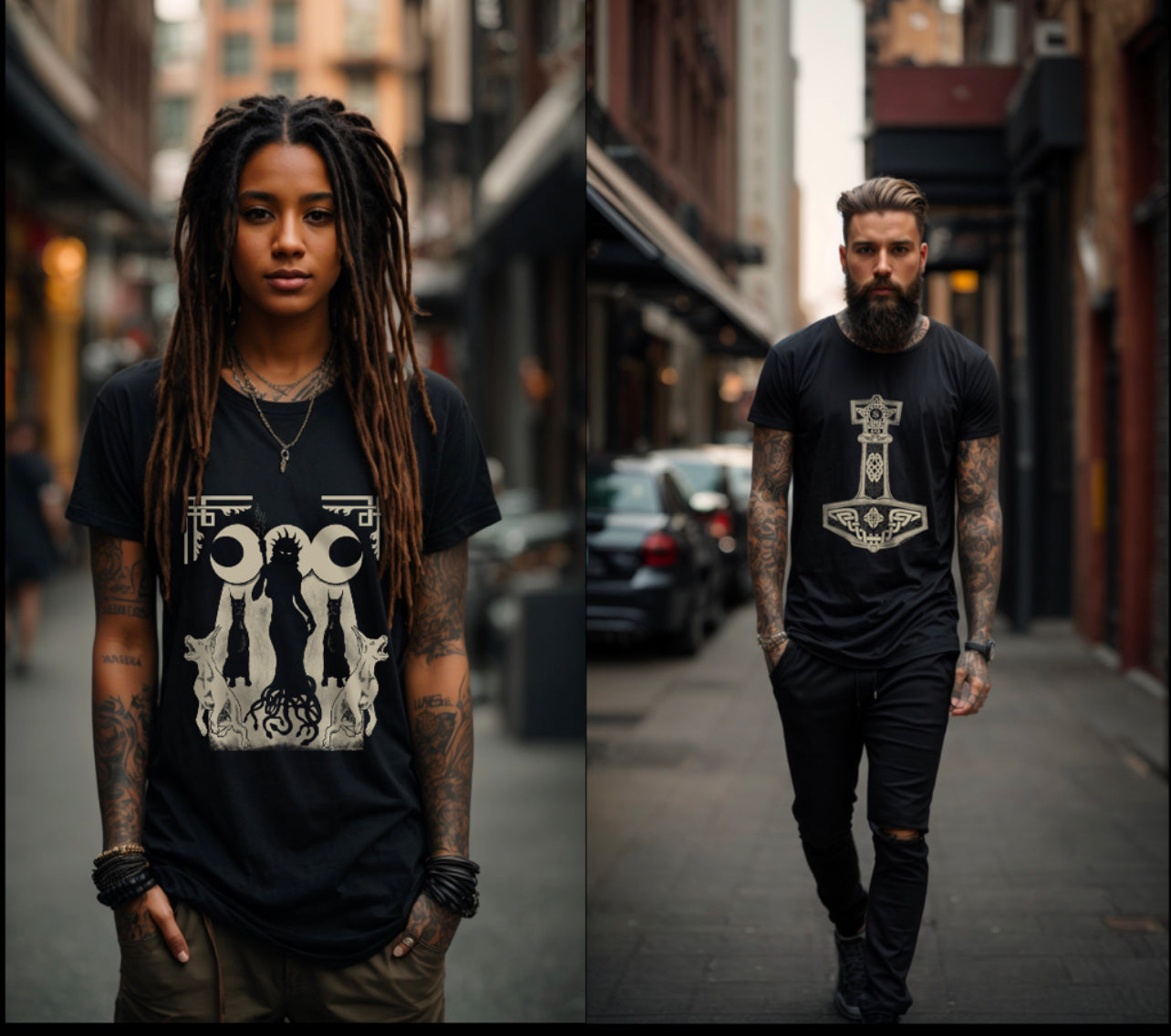Explore the mysterious origins, symbols, and power of Hecate, goddess of magic, crossroads, and the underworld. Discover her ancient role in pagan traditions and modern practice.
Who is Hecate? Origins, Symbols, and Power of the Goddess of Magic
“Leave a key at the crossroads, and she’ll know you’ve called.”
Hecate isn’t just some forgotten footnote in mythology—she’s a force. A goddess of magic, liminality, spirits, and sovereignty. She’s the one who stands where the roads meet, watching, waiting, guiding. She doesn’t just represent transformation. She is transformation.
But who was Hecate really? Where did she come from, and why does she remain one of the most potent and invoked deities in witchcraft, neopaganism, and esoteric circles today?
Let’s walk the winding path back to the beginning—and forward into her power.
Ancient Roots: Before the Myths Were Written
Hecate is often associated with Greek mythology, but her roots reach further. Some scholars believe she originated in Caria, in what is now southwestern Turkey. The Carians worshipped powerful female deities tied to the land, night, and underworld—making Hecate’s transition into the Hellenic pantheon a logical evolution.
By the time she appears in Hesiod’s Theogony (8th century BCE), she’s already a complex figure. Hesiod doesn’t just acknowledge her—he elevates her. He calls her a titan, born of the ancient powers Perses and Asteria, and says that Zeus himself honored her above all others.
This is crucial. In a pantheon where the Olympians often crushed the old gods, Hecate wasn’t just spared—she was revered. That kind of survival says something.
The Goddess of Boundaries and Liminal Spaces
At her core, Hecate is a goddess of thresholds. Crossroads, doorways, borders—anywhere one thing ends and another begins, she is present.
This makes her one of the most liminal figures in mythology. And liminality is power. The in-between is where transformation happens. Hecate is invoked at moments of change—birth and death, beginnings and endings, choices and initiations.
Her triple-form symbolism (often depicted with three faces or three bodies) emphasizes this triune power. Past, present, and future. Maiden, mother, and crone. Light, shadow, and something beyond both.
Keys, Torches, Dogs, and More: Her Symbols
Symbols matter because they bridge the seen and unseen. Hecate’s symbols are saturated with meaning:
- The Key – She holds the key to the mysteries, and to the spirit world. In practice, keys are left on altars or buried at crossroads as offerings.
- The Torch – She lights the way through darkness, both literal and spiritual. Think of it as her burning clarity in the murk of uncertainty.
- Black Dogs – Fiercely loyal, hauntingly intelligent, and often seen at night. Dogs were sacrificed to her in ancient rites and are considered her sacred companions.
- The Crossroads – A potent site of ritual. Many leave offerings to Hecate at three-way crossroads—places of both danger and decision.
- Serpents, Daggers, and Roots – Often found in depictions or associated spells. All represent transformation, power, and hidden knowledge.
Queen of Witches and Necromancer of the Underworld
Hecate’s domain includes necromancy, spirit communication, and protective magic. She isn’t some passive underworld figure—she’s active, deliberate, and sometimes terrifying.
She was believed to walk with the restless dead, holding sway over ghosts and spirits. Yet she was also called upon to protect households from them. That duality is her essence: both the gatekeeper and the guardian.
Witches and magicians throughout the ages have turned to her for power, guidance, and clarity—especially in working with spirits, baneful herbs, and shadow work. She is the torch in the dark for those who dare to look inward.
Hecate’s Feast Days and Offerings
In ancient Greece, devotees held Deipnon—a monthly ritual on the dark moon dedicated to Hecate. Offerings of garlic, eggs, honey, fish, and bread were left at crossroads and quietly walked away from. It was a time of purification, closure, and honoring the dead.
Today, modern pagans and witches often honor Hecate during:
- Samhain – As the veil thins, her role as psychopomp becomes more present.
- The Dark Moon – A natural time to connect with her energy of endings, magic, and release.
- November 16th (Hekate’s Night) – A modern feast day growing in popularity across witchcraft traditions.
Offerings can still include traditional foods, or more personal items—black candles, keys, herbs, or written petitions.
Why Hecate Still Matters Today
Hecate isn’t just relevant—she’s needed. In a world flooded with noise, she is silence and signal. In a culture addicted to certainty, she reminds us that truth lives in the in-between.
To walk with Hecate is to accept the unknown, to navigate personal transformation, and to reclaim your agency. She is especially resonant for those who:
- Are at a crossroads in life
- Work with ancestral or spirit magic
- Embrace shadow work and inner alchemy
- Feel drawn to the fierce, untamed feminine
Her resurgence in modern witchcraft is no accident. As more people return to the old ways, to earth-based and spirit-led paths, Hecate stands as a guiding flame—one who has never truly left.
Final Thoughts
Hecate isn’t here to comfort you. She’s here to empower you. She challenges, protects, and demands your full presence. Whether you honor her in ritual, through study, or simply by acknowledging her presence at your own life’s crossroads—know that she watches. And when the time is right, she opens the way.
So next time you feel lost in the dark, remember this:
She holds the key.
She lights the path.
She is already with you.



